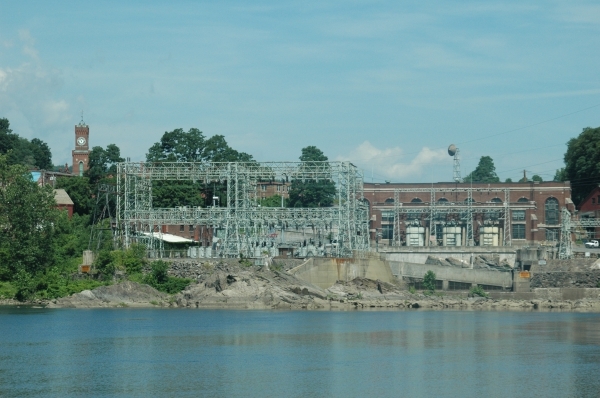SAXTONS RIVER — The “class of 2018” does not refer to a graduation class from one of our area schools, but rather to licenses that the Federal Energy Regulatory Commission (FERC) will issue to operate five Connecticut River hydroelectric facilities, all of which were set to expire in 2018.
The real story about the class of 2018 is that each facility individually, and all five of them as a combined class, have an impact on the Connecticut River.
The five facilities together affect more than 120 miles of river. Starting at the upriver facility, they are the Wilder hydroelectric dam, the Bellows Falls hydroelectric dam, and the Vernon hydroelectric dam. The three facilities in Vermont are owned and operated by TransCanada NE Hydro, a multinational corporation.
First Light, another multinational corporation, owns and operates the Northfield Mountain pump storage hydroelectric facility and the Turners Falls hydroelectric dam in Massachusetts.
River users face the relicensing of four hydroelectric dams and a reservoir pump storage operation, all of which affect the river all at once. The facilities are looking to renew their licenses for 40 years.
* * *
The huge task of assessing the impacts of these facilities will stretch over four years and require of those involved millions of dollars in field studies and thousands of hours of reading, writing, and attending endless meetings.
And that only gets us to the actual formal application by the project owners to FERC. The agency then has two additional years of review before they issue the licenses.
The facilities generate electric power - and income for the owners - using the Connecticut River, a public-trust resource that belongs to all of our citizens equally.
That public-trust status places an affirmative responsibility on each state to protect the quality and quantity of the waters and to see that the dams operate in such a way that the river meets our water-quality standards.
In the previous licenses, just two issues were reviewed: how safe the dams were for downstream property, and how much power each facility could produce.
When these dams were last licensed, the Clean Water Act had yet become law or they were in their infancy and not fully implemented. Neither was the Federal Power Act, nor the Nation Environmental Protection Act.
* * *
Implementation of the environmental protection laws in the intervening years has changed how FERC looks at hydro projects. The agency now must balance the environmental impacts with power production.
That mandate requires as complete an evaluation of the impacts of the facilities on the river as it is possible to obtain by in-water and on-shore evaluations of the changes in reservoir levels, the changes in flow rates, the changes and rate of change in river water levels, and a myriad of other effects that hydro operations have on our river.
In a natural river, water level and flows do change over time. A heavy rain will raise the level and flow, while a drought will lower both.
Usually, there are seasonal changes as well; summer means low flows, while spring and fall mean higher flows.
Water temperatures in a natural river rise and fall based on the season, but now think about those same changes in water levels, flows, and temperature of the river when facility operations change them hourly.
Aquatic species have evolved to deal with the natural changes in a river over the course of a year. They have not evolved to cope with the changes in flows, velocities, fluctuating water levels, and temperature changes over a matter of hours.
These are very different situations, and it is important to our river that we evaluate the impacts of rapid changes on the health of the river, our own enjoyment of the river, and the species depending on it for life.
* * *
Evaluations of the impact of the facilities are underway and have been, in some cases, for the past three field seasons.
Active river users have probably noticed a number of new markers floating in the river, an increased number of boats conducting studies, transect markers across the river measuring erosion, divers in the water looking for dwarf wedge mussels, and people walking or crawling around on the shore looking for insect and amphibian activity.
In total, for the five facilities, 70 field studies are in various stages of completion.
The next step is to evaluate what the studies reveal about the dam impacts on the river. This body of knowledge is unique and extraordinary in scope. No one has done this level of review on this reach of the river since it was first dammed back in the late 1700s.
We knew that the salmon, shad, and other fish runs stopped, but for the most part we are unaware of the other impacts of these dams.
If the relicensing process works properly, the findings from all of the fieldwork should be the basis of the formal relicensing applications and lead to license conditions that will, if necessary, change facility operations in the interests of our river.
* * *
So river users have a once-in-a-lifetime opportunity to address the impacts from these five facilities and lessen any damage their operations have on the river.
The relicensing of hydroelectric facilities does not get much attention from elected officials.
So in this case, ask your governor to pay attention to this relicensing.
It takes gumption and persistence to see those changes put in place, but the Connecticut River Watershed Council, other non-governmental organizations, and state and federal resource agencies are all at the table and working hard for the river.
